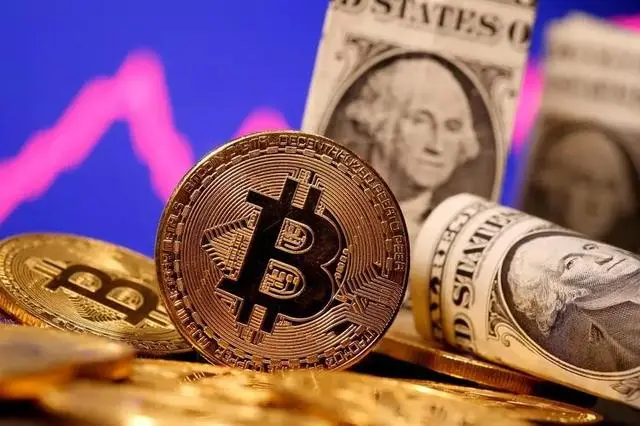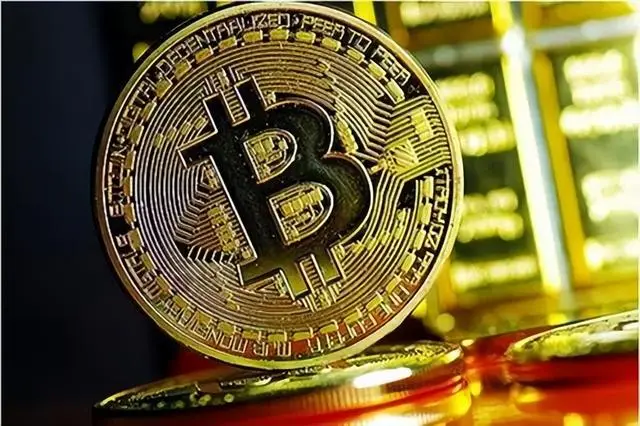The global financial markets of 2025 are witnessing an epic transformation of asset values.
This year, the performance of four key assets—Bitcoin, gold, crude oil, and the US dollar—can no longer be summarized as a simple "bull market" or "bear market." Behind this, global capital markets are casting stark contrasts on the future economic paradigm.
Bitcoin, the undisputed leader of digital assets, has achieved a staggering 158.9% increase over the past year, soaring to a record high of $97,050.
It is no longer just a plaything for speculators, but has demonstrated its powerful ability to attract institutional investors, becoming the "hard currency of the future" in the eyes of investors.
In sharp contrast, the traditional industrial sector faces an even more grim outlook for crude oil, with international oil prices sliding towards the psychologically challenging $50 per barrel. A deep sense of pessimism permeates the market.
It has served as a bellwether for global economic cycles over the past few decades. The weakness of crude oil not only reflects an imbalance between supply and demand, but also reveals the harsh reality of commodity deflation and the relentless impact of the global energy transition on the traditional fossil fuel era.

From a Single Anchor to a Multi-Purpose Game
For decades, global asset pricing has revolved around the US dollar as a core anchor.
Commodities, stocks, bonds, and more are all measured against the US dollar. This single pricing system once provided stable market expectations.
But now, this pattern is gradually being broken down. The rise of digital assets, represented by Bitcoin, has led the charge to challenge traditional pricing logic.
Data shows that even as the nominal value of gold and oil denominated in US dollars remains stable, the cost of these traditional assets denominated in BTC continues to decline.
This phenomenon clearly highlights Bitcoin's unique position as a new store of value and is prompting the market to rethink the definition of "value."

A recent Goldman Sachs report further indicates that Bitcoin has begun to possess the properties of a "quasi-currency." Over the past year, its purchasing power against a basket of commodities has appreciated by 42%. This stability not only far exceeds that of some emerging market currencies, but is even beginning to challenge gold's millennia-long status as a safe haven.
This shift is forcing financial institutions to accelerate the development of new asset valuation models. Traditional methods, which previously focused solely on cash flow and price-to-earnings ratios, are now forced to incorporate new dimensions such as the purchasing power and decentralized nature of digital assets.
Even more disruptively, Bitcoin is redefining how "wealth" is measured and stored.
In Southeast Asian cross-border trade, companies are already using it to hedge against exchange rate fluctuations. In some hedge fund portfolios, it shares the role of "inflation protection" with gold.
This reassessment of the value scale is fundamentally shaking the underlying logic of traditional asset pricing. As the single dollar anchor gradually loses its effectiveness, a new landscape in which multiple assets participate in pricing is quietly reshaping the value order in global financial markets.

The Deeper Drivers Behind the Divergence of Core Assets
The dramatic divergence of global core assets in 2025 is not a random market fluctuation, but the inevitable result of the intertwining of multiple underlying factors, with the decline of the US dollar being particularly crucial. The latest US economic data shows that the government deficit surged to $5.7 trillion in the second quarter of 2025, accounting for 16% of GDP.
At the same time, the personal savings rate plummeted from 33.7% during the pandemic to 17.8%. The twin deficit dilemma of "fiscal deficit + insufficient savings" continues to intensify, directly undermining market confidence in the US dollar.
Additionally, the Trump administration's tariff policy has reduced the average annual purchasing power of US consumers by $4,400, and has interfered with the Federal Reserve's policy independence.
The dollar's credibility as a global reserve currency continues to erode, which was the core driver of its 11% plunge in the first half of the year.
In stark contrast to the US dollar is the strength of gold, which is driven by the collective strategic planning of global central banks.
International Monetary Fund data shows that the proportion of gold in global foreign exchange reserves increased by 8.4 percentage points in the second quarter of 2025 compared to 10 years ago, and 43% of central banks have stated plans to continue increasing their holdings over the next 12 months.

Amid the trend of de-dollarization, gold has become a crucial tool for countries to diversify their reserve risk and consolidate their monetary sovereignty. This continued increase in official holdings has provided solid support for gold prices to break through $4,000 per ounce.
Crude oil's weakness stems from a dual squeeze on both supply and demand. On the supply side, OPEC+ continues to increase production to regain market share, while Saudi Arabia and other countries plan to release 1.66 million barrels of excess production capacity per day.
On the demand side, the global energy transition is accelerating, and the adoption of electric vehicles has led to a decline in transportation fuel demand. Organizations such as the EIA and IEA have lowered their annual demand forecasts.
More importantly, the impact of the global energy transition on the traditional fossil fuel era is already evident.
Some countries have begun to reduce their reliance on crude oil imports, further exacerbating downward pressure on oil prices and further sharpening the divergence between crude oil and other assets.
It is these underlying forces, stemming from economic structures, policy choices, and industrial transformation, that are driving the differentiated trends of core global assets.

The Broken Traditional Correlation and the Formation of a New Correlation
In traditional financial logic, the negative correlation between the US dollar and crude oil was once a market consensus.
A falling US dollar would make crude oil priced in it more cost-effective, thereby driving up oil prices.
However, the market in 2025 broke this "iron rule." The US dollar index plummeted 11% in the first half of the year, while crude oil prices simultaneously slid towards $50 per barrel.
Crude oil prices are now driven by supply and demand fundamentals, with the core conflict being the OPEC+ production increase and the decline in global demand.
The US dollar's performance is increasingly constrained by internal factors such as the US fiscal deficit and policy independence. The traditional correlation between the two currencies has completely broken down.
In its place, a new asset correlation has emerged.
In the first half of 2025, for every 1% decline in the US dollar index, the price of Bitcoin rose by an average of 3.2%.
The correlation coefficient between the two currencies reached -0.87, far exceeding the -0.52 in 2024. This strong negative correlation clearly demonstrates the trend of capital shifting from the US dollar to digital assets. Even more groundbreaking is the increasingly diverse forms of interaction between assets.
Some OPEC members have privately discussed the possibility of pricing crude oil in Bitcoin. While this hasn't materialized, it has cast doubt on the US dollar pricing system.
Hedge funds' holdings of gold and Bitcoin as a "dual-safe haven" portfolio have increased by 60%. The two assets have shifted from competition to complementarity, jointly addressing the uncertainties of the traditional monetary system.
Future Evolution of the Global Financial Landscape
Looking back from 2025, the direction of the global financial landscape has become increasingly clear, with the crude oil market bearing the brunt of long-term changes.
Multiple authoritative institutions predict that the global oil market will reach a "double peak" in both supply and demand around 2030. On the demand side, transportation fuel demand will decline rapidly due to the widespread adoption of electric vehicles; on the supply side, OPEC+ will gradually release excess production capacity.
However, the steady growth in demand for chemical raw materials will provide key support, allowing crude oil demand to reach a "gradual peak" rather than a cliff-like decline. This means that the central oil price is likely to continue to decline, with medium- to low-level fluctuations becoming the new normal. The diversification of monetary systems is another core trend. The EU, in its retaliation against US tariffs, has for the first time experimented with dual-currency settlement using the euro and the renminbi.
China's digital renminbi pilot program has expanded to the entire Jiangsu province, and Russia has reduced its dollar reserves to below 5%. These initiatives are collectively accelerating the formation of a diversified settlement system.
The simultaneous rise of gold and Bitcoin further underscores this trend: gold represents a return to a millennial era of credit.
Gold is a stabilizer of the "multipolar currency" system; Bitcoin, on the other hand, embodies the innovation of digital technology and represents a breakthrough in the traditional financial system.
The simultaneous rise of both reflects the market's distrust of a single currency system and the urgent need for diverse stores of value. It also foreshadows the evolution of the global financial landscape towards a more decentralized and diversified landscape.
Conclusion
The divergence and restructuring of global asset markets in 2025 are not short-term fluctuations, but rather a profound transformation of the financial order.
From the diverse game of pricing logic, to the complex interweaving of driving factors, to the alternation of old and new interactive relationships, every step of change is rewriting the rules of global finance.
In the future, the weakening of the US dollar's hegemony, the adjustment of crude oil's status, and the rise of digital assets will become the norm.
In this transformation, there will be no permanent winners. Only by adapting to the trends and grasping the essence can one find a foothold in the new financial landscape. This transformation itself will reshape the global economic landscape for decades to come.

%20--%3e%3c!DOCTYPE%20svg%20PUBLIC%20'-//W3C//DTD%20SVG%201.1//EN'%20'http://www.w3.org/Graphics/SVG/1.1/DTD/svg11.dtd'%3e%3csvg%20version='1.1'%20id='图层_1'%20xmlns='http://www.w3.org/2000/svg'%20xmlns:xlink='http://www.w3.org/1999/xlink'%20x='0px'%20y='0px'%20width='256px'%20height='256px'%20viewBox='0%200%20256%20256'%20enable-background='new%200%200%20256%20256'%20xml:space='preserve'%3e%3cpath%20fill='%23FFFFFF'%20d='M194.597,24.009h35.292l-77.094,88.082l90.697,119.881h-71.021l-55.607-72.668L53.229,232.01H17.92%20l82.469-94.227L13.349,24.009h72.813l50.286,66.45l58.148-66.469V24.009z%20M182.217,210.889h19.566L75.538,44.014H54.583%20L182.217,210.889z'/%3e%3c/svg%3e)